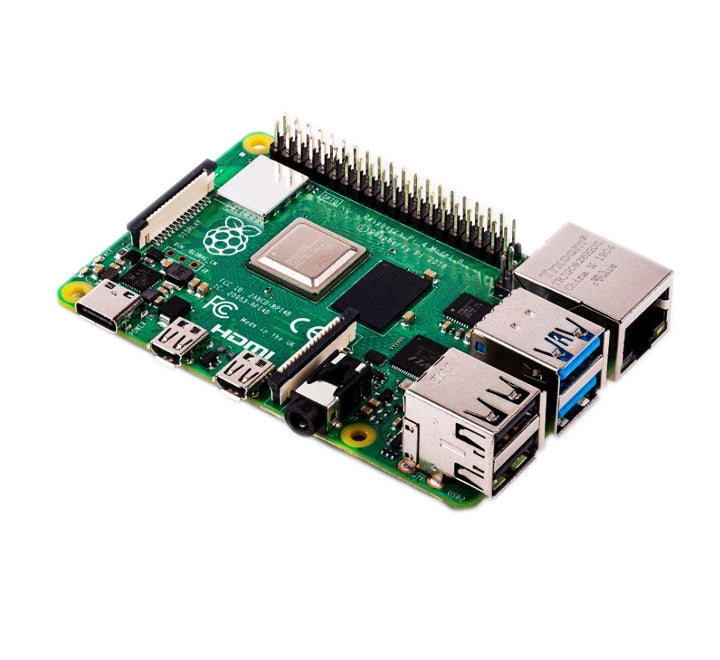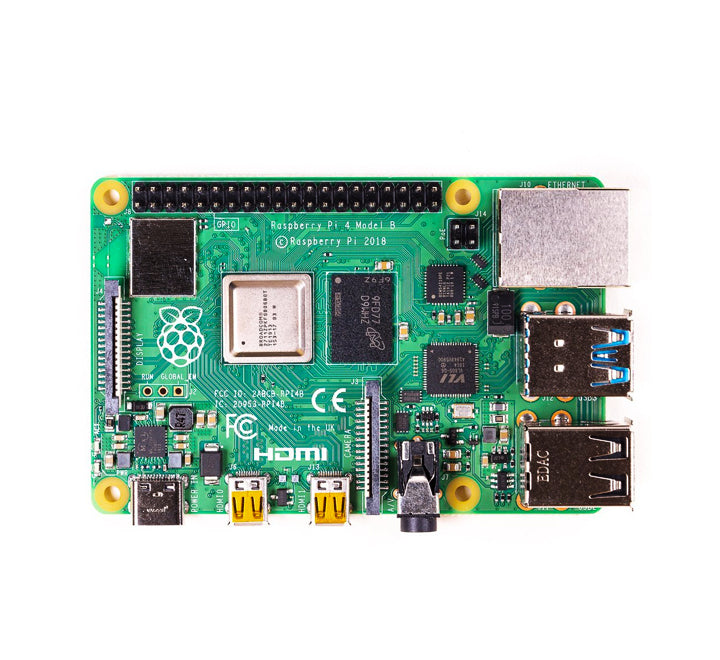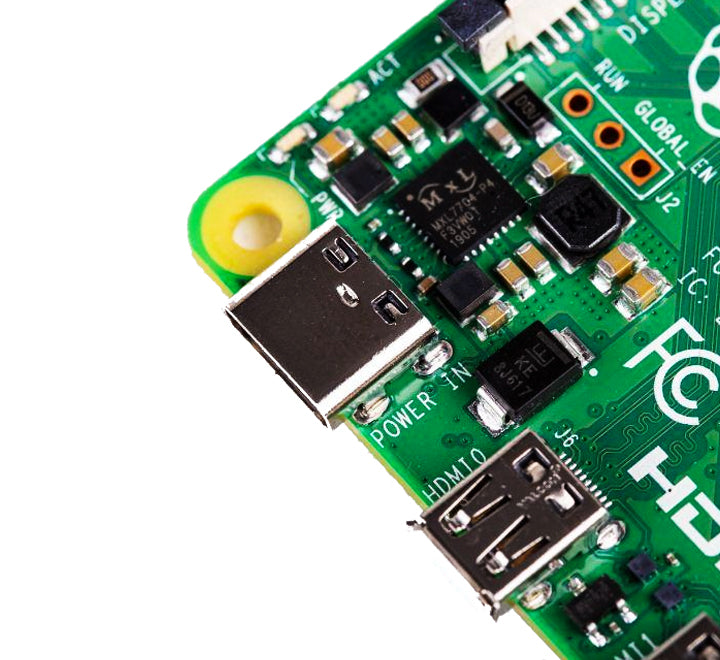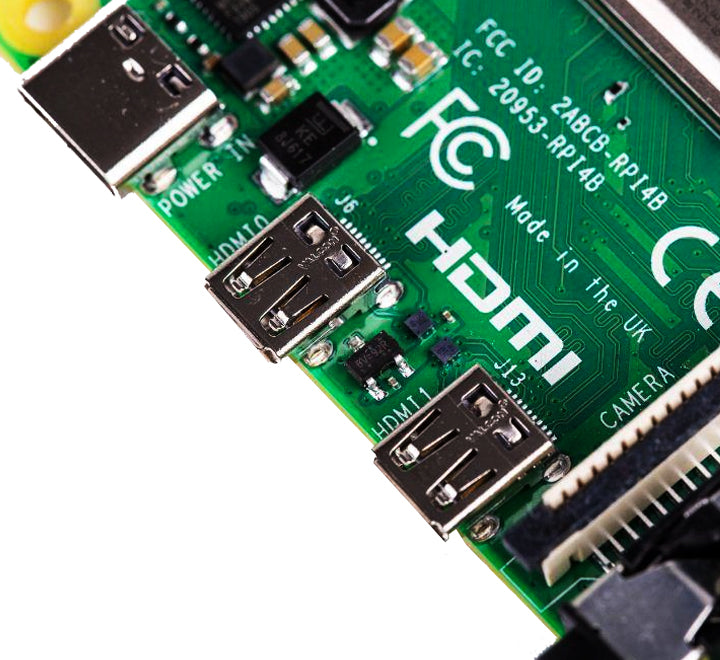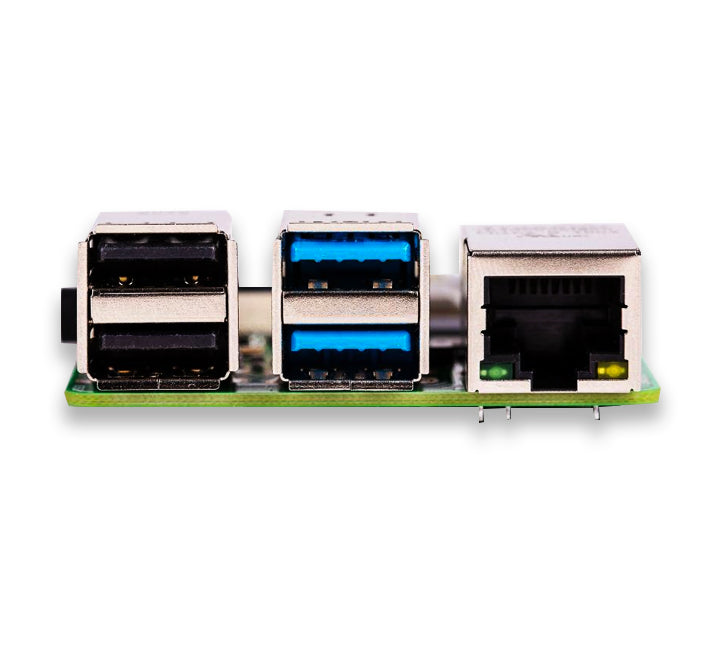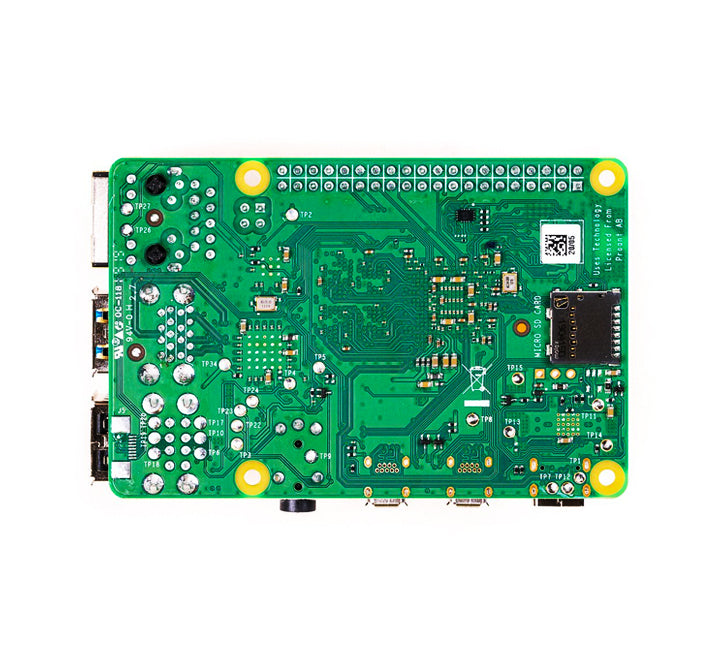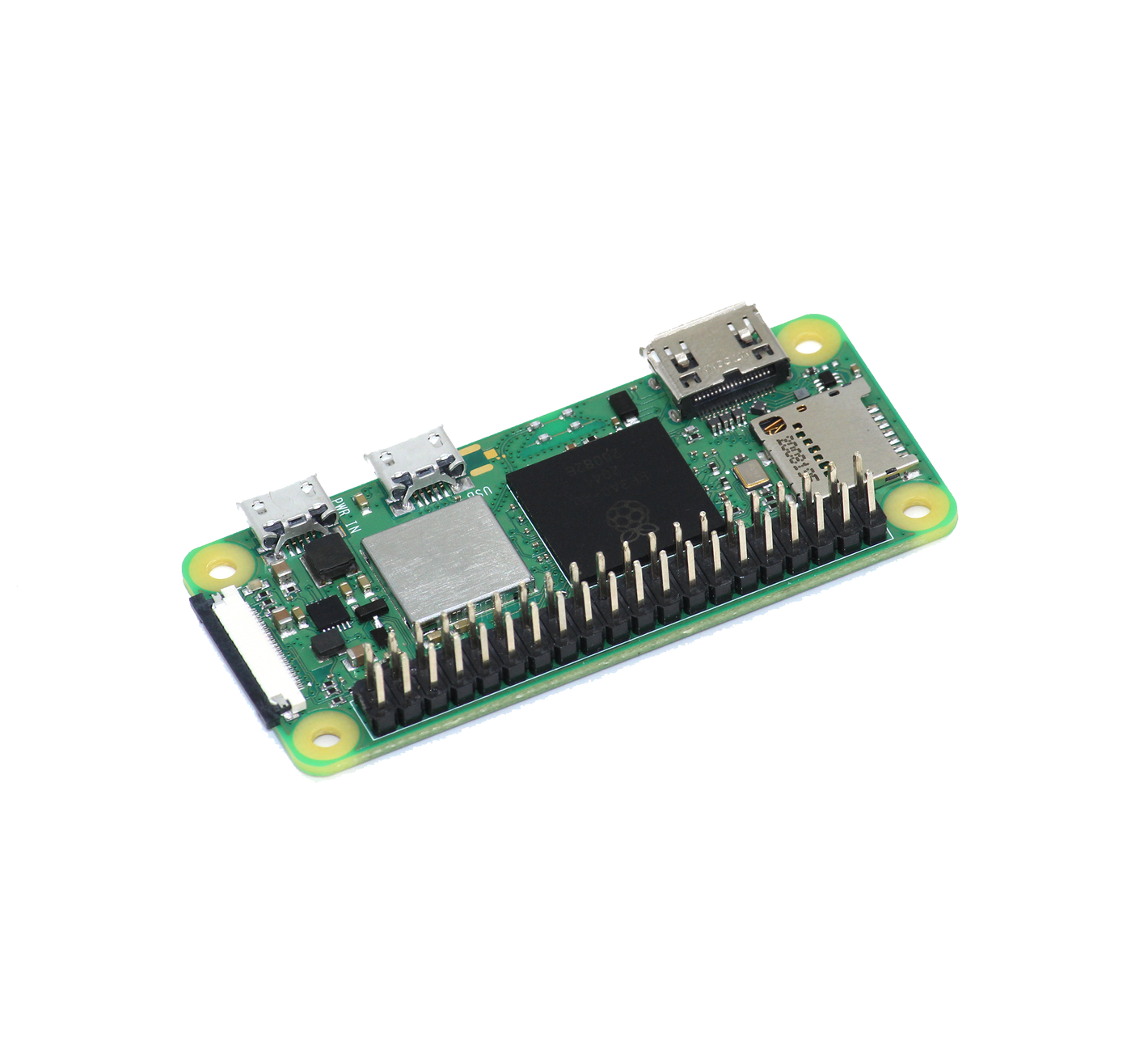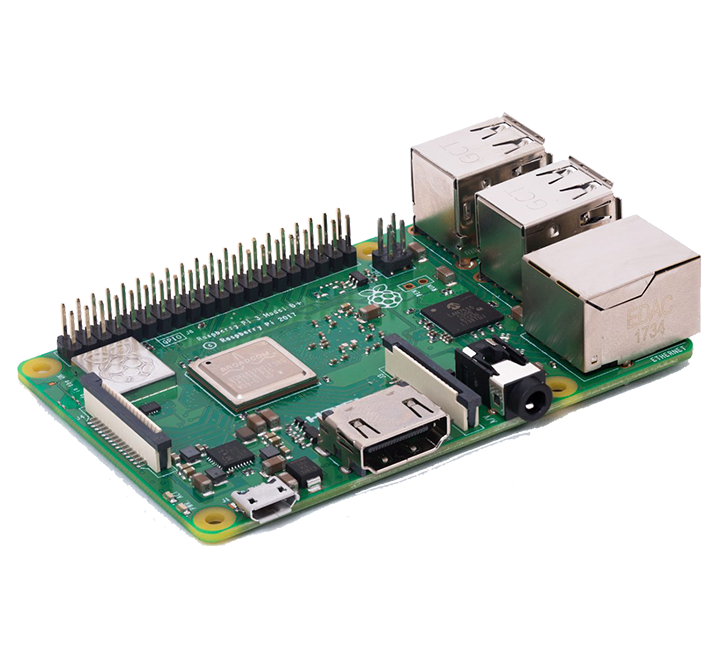The Raspberry Pi 4 is the latest product in the Raspberry Pi range, boasting an updated 64-bit quad core processor running at 1.4GHz with built-in metal heatsink, USB 3 ports, dual-band 2.4GHz and 5GHz wireless LAN, faster (300 mbps) Ethernet, and PoE capability via a separate PoE HAT.
The speed and performance of the new Raspberry Pi 4 is a step up from earlier models. For the first time, it comes with a complete desktop experience. Whether you're editing documents, browsing the web with a bunch of tabs open, juggling spreadsheets or drafting a presentation, you'll find the experience smooth and very recognizable — but on a smaller, more energy-efficient and much more cost-effective machine.
You can still utilize all your favorite Raspbian or PIXEL software with this update. You just need to upgrade your Raspbian operating system, Install the latest version so that the firmware can support all the latest chips! Previous SD cards from past releases will not work without an upgrade..

Features
Desktop Level Experience: The faster 1.5GHz 64-bit quad-center CPU on the Raspberry Pi 4's Cortex A72 SoC, combined with the up to 4GB LPDDR4 RAM give execution practically identical to entry level x86 desktop PCs. You'll see altogether quicker boot speeds, and much better execution for CPU-heavy tasks like imitating and media focus use; a lot snappier all round!
Significantly Faster IO: The Raspberry Pi 4 has two USB 3.0 ports, for up to 10x faster transfer speeds than USB 2.0, perfect for connecting fast peripherals like SSDs and flash drives. There are also two USB 2.0 ports for connecting less speed-dependent peripherals like keyboards and mouse.
Dual Micro-HDMI, 4K Display Support: There are dual micro-HDMI ports that help up to 4Kp60, to use your Raspberry Pi 4 with a lot bigger presentations with fresh, sharp, high goals. Utilize the H.265 4Kp60 hardware decoding to watch 4K motion pictures in your preferred media device.
Power: Raspberry Pi 4 supports modern USB Type-C connector for power supply. This supports an extra 500mA of current, ensuring 1.2A for downstream USB devices, even under heavy CPU load.
Silent, energy-efficient: The fanless, energy-efficient Raspberry Pi runs silently and uses far less power than other computers.
Fast networking: Raspberry Pi 4 comes with Gigabit Ethernet, along with onboard wireless networking and Bluetooth.
Your Choice of RAM: Different variants of the Raspberry Pi 4 is available, depending on how much RAM you need — 2GB, 4GB or 8GB.
Specifications
- A 1.5GHz quad-core 64-bit ARM Cortex-A72 CPU (~3× performance).
- 2GB, 4GB, or 8GB of LPDDR4 SDRAM.
- Full-throughput Gigabit Ethernet.
- Dual-band 802.11ac wireless networking.
- Bluetooth 5.0.
- Two USB 3.0 and two USB 2.0 ports.
- Dual monitor support, at resolutions up to 4K.
- VideoCore VI graphics, supporting OpenGL ES 3.x.
- 4Kp60 hardware decode of HEVC video.
- 40-pin GPIO header
- 2× micro-HDMI ports (up to 4Kp60 supported)
- 265 (4Kp60 decode)
- 264 (1080p60 decode, 1080p30 encode)
- OpenGL ES, 3.0 graphics
- DSI display port, CSI camera port
- Combined 3.5mm analog audio and composite video jack
- Micro-SD card slot
- USB-C power
Kit Content
- 1 x Raspberry Pi 4 Model B
Here are some great projects that will help you start writing code and get going with digital making.
Check Here Project Raspberry Pi

